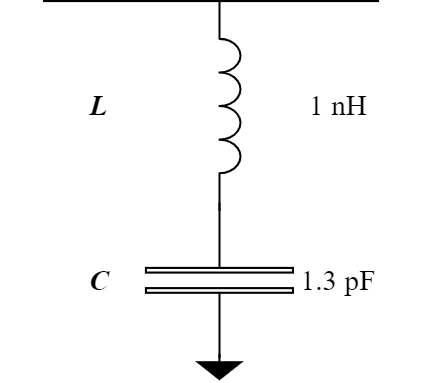SWRA729 April 2022 CC1352P , CC2652P
3.1 Compliance with FCC regulations
| Measured violating harmonic (using maximum output power) | -21.23 | -25 | -30 | -35 | -40 | -41.23 | dBm |
| Regulatory Requirement (2nd or 3rd harmonics) | -41.23 | -41.23 | -41.23 | -41.23 | -41.23 | -41.23 | dBm |
| TX on time (ms) | 10.00 | 15.43 | 27.45 | 48.81 | 86.80 | 100.00 | ms |
| Duty Cycle | 10.00 | 15.43 | 27.45 | 48.81 | 86.80 | 100.00 | % |
If duty cycling is not an option whilst operating at maximum output power, it is recommended to implement a notch filter or band stop filter to meet the FCC requirements for the 2nd harmonic. The notch filter given in Figure 3-1 consists of one inductor in series with a capacitor. The values of the components as shown in Figure 3-1 is derived by Equation 2, and should sufficiently attenuate the 2nd harmonic. Where L is an inductor and Ctot is the sum of the capacitor C and the parasitic capacitance from the layout. The filter should be connected to the unbalanced port of the PA IPC. However, if a switch is utilized it would be beneficial to place it at the common port of the RF switch so all RF ports will benefit from the additional filtering.
 Figure 3-1 Circuit Diagram of the Notch Filter.
Figure 3-1 Circuit Diagram of the Notch Filter.